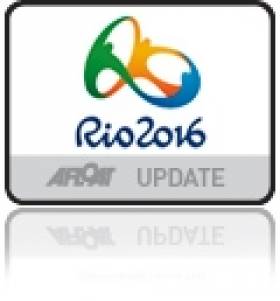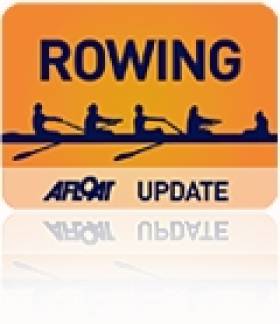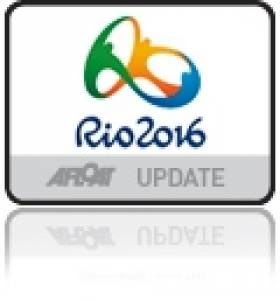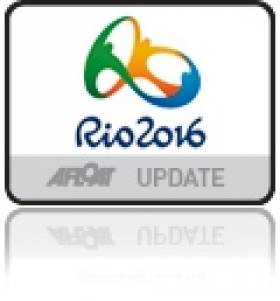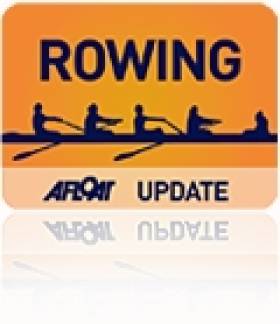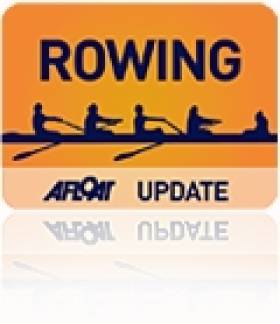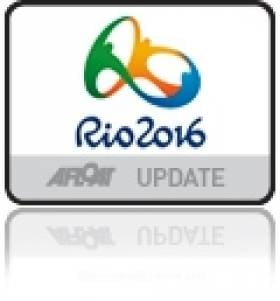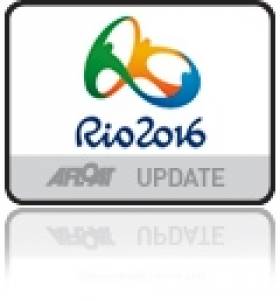Displaying items by tag: Olympics
#Rio - Rio de Janeiro's dirty water problem will not be solved by the time the Brazilian city hosts the next summer Olympic Games in 2016, as The New York Times reports.
Despite promises by city officials as far back as 2009 that Guanabara Bay and Rio's waterways would be cleaned of sewage and refuse by at least 80%, a recent letter obtained by the Associated Press news agency claims that at the current funding rate it would take a decade to reduce pollution to acceptable levels.
The letter from the office of Rio's state environment secretary to Sports Minister Aldo Rebelo is backed up by an AP analysis of national statistics which shows pollution in the city's waters is far above Brazil's national limits, which are themselves regarded as less stringent when compared to European standards.
As reported last December on Afloat.ie, Irish Olympic sailing coach branded the future Olympic waters of Rio as "absolutely disgusting", comparing Guanabara Bay to a "sewer" where training sailors had to repeatedly stop to disentangle refuse from their rudders.
State authorities are now asking for $70 million to build new river water treatment units to filter out waste before it reaches the bay, though it's expected to reduce current pollution levels by just 50% in time for the first sailing events.
The New York Times has more on the story HERE.
High Five for Rowers as Irish Sports Council Confirms Carding
#ROWING: A relatively good 2013 for Irish international rowing will bring practical benefits this year. Five rowers, three more than last year, will receive funding from The Irish Sports Council under the 2014 International Carding Scheme. Sanita Puspure and Claire Lambe have again hit the mark: Puspure qualifies for €20,000 as a world class category athlete and Lambe receives €12,000 as an international class competitor. The two are joined this year by Paul O’Donovan, Leonora Kennedy and Monika Dukarska, who will also be granted €12,000 as international class athletes.
O’Donovan won a medal at the World Under-23 Championships in 2013, while the women’s double sculls of Dukarska and Kennedy finished 10th at the World Championships. This position would secure Olympic qualification for an Ireland boat if it were reproduced at the World Championships next year.
Star Class Officially Out Of 2016 Olympics
#Star - It's been confirmed that the Star, the last keelboat event among the Olympic sailing classes, will not be a part of Rio 2016.
Despite hopes that the class would find a place in the schedule for the next Olympic Games - especially after Brazil's president threw her support behind the cause - Scuttlebutt reports that the decision was made final at a meeting of the IOC in Sochi this week ahead of the Winter Olympics.
It's a blow to Brazil's own sailing community, which has claimed six golds in the Star in the past and finished on the podium in the last two Games.
And closer to home, the decision also scuppers chances of Peter O'Leary and David Burrows making another run at Olympic gold in the Star - but it's surely not the last we've seen of them on the world sailing stage.
#Olympics - Annalise Murphy might be preoccupied with next week's Miami regatta, but the main focus for her and fellow Providence Team IRL members will be the Olympic qualifier in Santander this coming September.
As The Daily Sail reports, "the target is to qualify Ireland in all classes" - and the road to Rio begins in earnest next week at the Olympic classes regatta in Florida, where Murphy will be in action in the Laser Radial alongside the Sonar trio of John Twomey, Ian Costello and Austin O’Carroll, who are in the running for Paralympics spots.
Providence Team IRL - rounded off by Laser sailor James Espey and 49er duo Ryan Seaton and Matthew McGovern - is the name given to the elite of the elite by the Irish Sailing Association's (ISA) Performance department, which is at present developing 102 sailors through its Performance Pathway from junior through to the highest level.
Among them are the up-and-coming Olympic Development Squad, with Andrew Brewster and Saskia Tidey in the new 49erFX class, and the Laser Development Squad, which counts the high-achieving teens Finn Lynch and Fionn Lyden in its ranks.
The Daily Sail has more on the story HERE.
Kitesurfing Will Be 'First Alternate' At Tokyo 2020
#Kitesurfing - There's been some good news for kitesurfing on the Olympic front as Surfer Today reports that the kiteboarding class will be the first alternate for the Tokyo Games in 2020.
It was announced at the 2013 ISAF Annual Conference in Oman that kiteboarding will be first in line if additional medals are allocated by the International Olympic Committee (IOC) for sailing in Tokyo in seven years' time.
In addition, the ISAF Council decided that class status will be awarded to the Formula Kiteboard and Twin Tip Kiteboard among a number of newly recognised sailing classes.
The news follows the recent message from the ISAF that kitesurfing would add an 'urban sport' feel to the Olympic programme should it be reinstated.
Kitesurfing was to be included in Rio 2016 at the expense of windsurfing only for the decision to be reversed in Dun Laoghaire a year ago.
Kitesurfing Would Bring 'Urban Sport' Feel To Olympics Says ISAF
#Kitesurfing - Kitesurfing would add an 'urban sport' feel to the Olympic programme and should be reconsidered for inclusion in future Olympic Games.
That's the message according to the International Sailing Federation (ISAF) in the minutes of its recent Executive Committee meeting in Paris (available as a PDF to read or download HERE).
In his report on recent activities, ISAF president Carlo Croce related that a "constructive meeting" had taken place with the International Olympic Committee (IOC) with a view to the possibility of adding kitesurfing to the list of Olympic sports in future.
On a similar note, a decision was taken to send a letter to the organisers of the Mediterranean Games asking them to consider hosting kitesurfing at their next event in Spain in 2017.
The ISAF's interest in kitesurfing is no surprise, given last year's move to include the new sport at the Rio Games in 2016 at the expense of windsurfing, only for the decision to be reversed at the federation's AGM in Dun Laoghaire last November amid accusations over the new sport's allegedly 'dangerous' reputation.
That was something of a bitter blow at the time to Claudine Murphy - sister of Olympic hero Annalise - who had been campaigning in the new class.
However, she has since teamed with Andrea Brewster to challenge for a spot in the 49er FX skiff class - and hopefully make it a sister act with her younger Laser-racing sibling in Brazil less than three years from now.
Rowing Course Earmarked As Tokyo Gets 2020 Olympics Nod
#Olympics - With Tokyo announced as the host city for the 2020 Olympic Games, World Rowing takes a look at what may be the course that the world's top rowers will race seven years from now.
The Sea Forest Waterway is a new regatta rowing course planned for Tokyo Bay, close to Haneda Airport and the proposed location of the Olympic Village.
The new course will comprise an existing shipping canal in an area of reclaimed land that's earmarked for new development, and would become a permanent fixture on Tokyo's expansive waterfront.
World Rowing has more on the proposals HERE.
O'Donovan (19) Marks World Cup Debut With Heat Win
# ROWING WORLD CUP: Paul O’Donovan gave Ireland lift-off at the World Cup Regatta at Dorney Lake this morning. The 19-year-old UCD student, making his World Cup debut, won his heat of the lightweight single sculls to qualify directly for the Semi-Finals. Duncan Grant of New Zealand, the red-hot favourite, took the second qualification place.
Claire Lambe will have to travel the repechage route after a third-place finish in her heat of the lightweight single sculls. With Fabiane Beltrame of Brazil winning well, direct qualification for the A Final rested on taking the second place. Ruth Walczak of Britain grabbed her chance.
Tom Kelly finished fourth in the heat of the Arms and Shoulders single sculls.
World Cup Regatta, Dorney Lake, Day One (Irish interest)
Men
Lightweight Single Sculls - Heat Two (First Two Directly to A/B Semi-Final; rest to Repechage): 1 Ireland (P O’Donovan) 7:13.89, 2 New Zealand (D Grant) 7:17.37; 3 Hong Kong 7:27.67, 4 Korea 7:28.71, 5 Brazil Two 7:30.92, 6 Japan 7:32.49.
Arms and Shoulders Single Sculls – Heat One (First Directly to Final; rest to Repechage): 4 Ireland (T Kelly) 6:31.23.
Women
Lightweight Single Sculls – Heat Two (First Two Directly to A Final; rest to Repechage): 1 Brazil (F Beltrame) 7:54.85, 2 Britain (R Walczak) 7:59.13; 3 Ireland (C Lambe) 8:07.80, 4 Paraguay 8:29.68, 5 Hong Kong 8:34.62.
Annalise Sails for Three Out of Three as Irish Sailors Head for Sail for Gold, Weymouth
#SailforGold– Irish Olympic Sailing sensation Annalise Murphy is back in Weymouth to make it three out of three in the Eurosaf Champions Sailing Cup series after already taking gold at the first two events in Italy and Holland.
She is joined by four of her London 2012 Olympic team mates this weekend to begin competing at the Sail for Gold Regatta. Murphy (Laser Radial) is joined by Ryan Seaton and Matt McGovern (49er) and James Espey (Laser) will begin racing on Sunday in what will be the third of five EUROSAF installments
This will be the first regatta of the 2013 season for Seaton and McGovern who finished 14th overall at the Games last year. Back in familiar waters after months of physical and mental training, the duo are eager to once again feel the adrenaline of elite competition as they begin their campaign towards the Rio 2016 Olympics. Up against some of the top international 49er teams, the Northern Irish men will be looking to shake off the cobwebs after an extended break from competition.
Also campaigning for the Rio Games and competing for the first time in the 49er FX class will be two new all-female pairings. Claudine Murphy, older sister of Annalise, has teamed up with Andrea Brewster while Tiffany Brien and Saskia Tidey, will be sailing the other Irish entry for the new Olympic class.
Videos Get Up Close With Annalise Murphy
#Annalise - A new series of videos (via Sailfeed) peers into the world of Afloat.ie Sailor of the Year and Olympic hopeful Annalise Murphy as she readies herself for her next Olympic campaign.
With little more than three years to go till the first races in Rio, Ireland's top Laser Radial prospect discusses her commitment to the sport and the hard work she's determined to put in between now and 2016.
And it almost goes without saying that the whole of Ireland will be behind 'The Irish Lever' all the way as she takes on the best of the best in Brazilian waters.
More from Annalise below:
Annalise Murphy Interview - The Journey from Atomic on Vimeo.
Annalise Murphy - The Journey/The Gathering from Atomic on Vimeo.


























